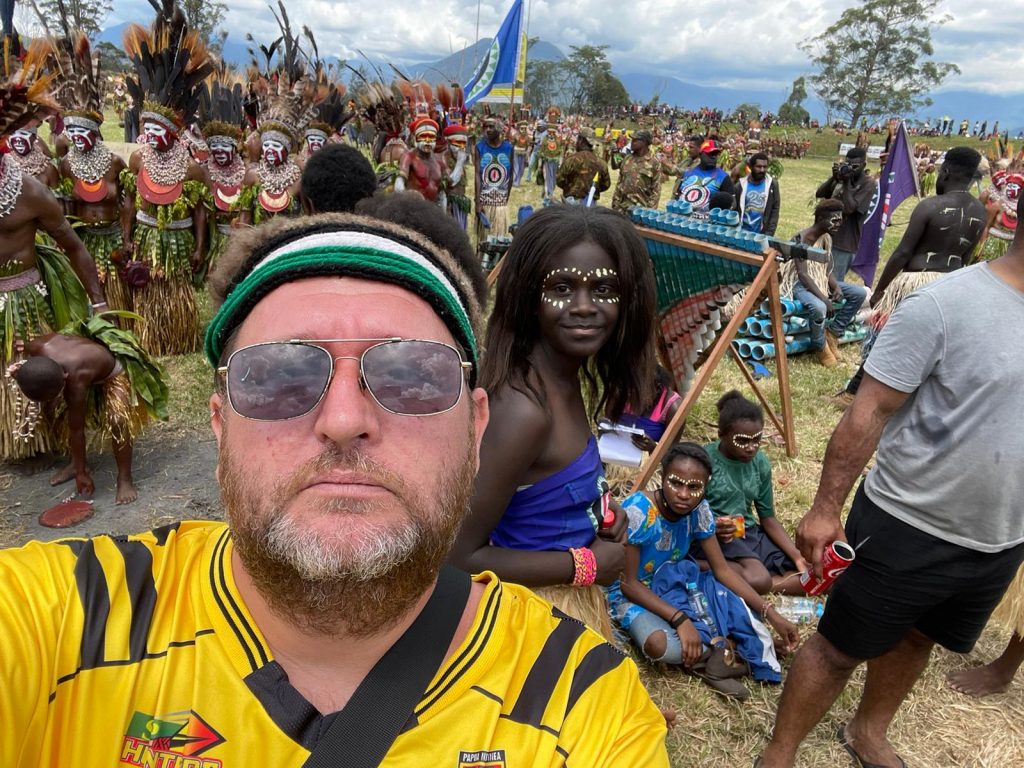Nestled in the heart of Papua New Guinea’s highlands, the Mount Hagen Festival stands out as one of the most vibrant and culturally immersive events in the world.
Every August, this remote corner of the globe comes alive with an explosion of colors, sounds, and traditions, as tribes from across the country converge to showcase their unique cultures and foster unity.
But what’s the story behind this fascinating festival? Let’s dive into the history of the Mount Hagen Festival and explore what makes it a must-see event.
To read about Nightlife in Mount Hagen click here.
Origins of the Mount Hagen Festival




The Mount Hagen Festival, known locally as the Mount Hagen Show, was first held in 1961. During this period, Papua New Guinea was still under Australian administration, and the nation was in the midst of significant social and political transitions. The festival was conceived as a means to bring together the diverse tribes of the highlands in a peaceful and celebratory environment. The primary aim was to promote unity and understanding among the various groups, who had long histories of conflict and division.
The inaugural festival was a modest affair, but it quickly gained traction and became a major annual event. The concept was simple but powerful: a gathering where different tribes could come together, share their cultural practices, and showcase their traditional dances, music, and attire. This initial success laid the foundation for what would grow into one of Papua New Guinea’s most iconic cultural events.
Evolution and Growth
Over the decades, the Mount Hagen Festival has evolved from a local gathering into an international sensation. What started as a small event in the highlands now attracts thousands of visitors from around the world. The festival has grown to include over 100 different tribal groups, each bringing their own unique cultural flair to the celebration.
The festival’s growth can be attributed to its ability to adapt while staying true to its roots. The organizers have managed to maintain the authentic spirit of the festival while expanding its reach and scale. Today, the Mount Hagen Festival is not just a celebration of traditional cultures; it’s also a significant tourist attraction that contributes to the local economy and promotes cultural preservation.
What to Expect at the Festival
Attending the Mount Hagen Festival is like stepping into a living museum of Papua New Guinea’s cultural heritage. The festival grounds are transformed into a vibrant tapestry of colors and sounds, with tribal groups from all over the highlands performing traditional dances, songs, and rituals.




One of the most striking aspects of the festival is the elaborate costumes worn by the participants. These costumes are often made from natural materials such as feathers, shells, and bark, and are adorned with intricate designs that reflect the unique identity of each tribe. The level of craftsmanship involved is truly remarkable, and the costumes play a crucial role in the storytelling and cultural expression of the festival.
In addition to the performances, the festival also features a range of traditional foods and crafts. Visitors can sample local dishes, purchase handcrafted items, and immerse themselves in the rich traditions of Papua New Guinea. The festival is a feast for the senses, offering a rare opportunity to experience the highlands’ diverse cultures in a single location.
Cultural Significance
The Mount Hagen Festival is more than just a colorful spectacle; it plays a crucial role in the cultural and social fabric of Papua New Guinea. For many tribes, the festival is an important opportunity to preserve and pass on their traditions to younger generations. It serves as a platform for cultural exchange, helping to foster understanding and respect among different groups.
Moreover, the festival helps to promote peace and reconciliation among tribes. In a country with a history of tribal conflict, the festival provides a space for dialogue and cooperation, demonstrating the power of cultural events to bridge divides and build unity.
Planning Your Visit
If you’re planning to attend the Mount Hagen Festival, it’s essential to prepare in advance. The festival usually takes place over a weekend in August, and accommodation in Mount Hagen can be limited, so booking early is advisable. The festival grounds are located just outside the town, and transportation options are available for visitors.
For more information on the Mount Hagen Festival and to plan your visit, check out our Mount Hagen Festival Tour, which offers an immersive experience into this incredible event.
Further Reading
To get a taste of Papua New Guinea’s vibrant culture beyond the Mount Hagen Festival, explore the Street Food Guy’s article on Lopez Restaurant in Hiroshima, which offers a fascinating glimpse into diverse culinary experiences. Though focused on Japan, it provides an interesting contrast to the rich and varied food culture you’ll encounter in Papua New Guinea.
Conclusion
The Mount Hagen Festival is a celebration of the diverse and vibrant cultures of Papua New Guinea’s highlands. It’s a testament to the enduring spirit of the tribes and their commitment to preserving their heritage. For anyone interested in experiencing the richness of Papua New Guinea’s traditions, the Mount Hagen Festival is an unmissable event that promises an unforgettable journey into the heart of this remarkable country.
You can check out my Mount Hagen Tour here.

